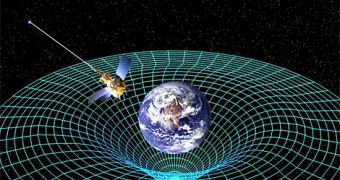The most complex satellite ever built was almost compromised by an extremely tiny flaw in its design, which made the results very hard to read and less precise than needed. The Gravity Probe B, as the device was called, was launched in 2004 with the goal of proving some aspects of Einstein's general theory of relativity, namely those that also provide reasonable grounds to the black holes hypothesis. But the error and its consequences forced NASA to cancel funding the expensive project.
The $650 million project's flaw was somewhat comparable to NASA's faulty design for the Hubble telescope's main lens. The GP-B consisted of a series of four 6.4-meter long gyroscopes that would measure the faint impact of the gravitational field of the Earth over the fabric of space. Basically, this would be compressed such that the circles within it would yield an area a tiny bit less than 360°, which would mean that a complete orbit cycle of the satellite would cause it to shift a little and not arrive in exactly the same spot upon completion (a process called a geodetic effect).
Secondly, the probe attempted to determine the Earth's frame dragging, which is similar to sinking a spinning ball into oil. As the ball drags some oil particles during its spinning process, so does the Earth supposedly rip out tiny fragments of the space-time fabric while turning. The GP-B is theoretically able to record such slight phenomena as its gyroscopes drift for about 0.00000000001 (one hundred-billionth) degree each hour. Still, the technical fault prevented the probe from obtaining the accurate results required by the project, generating too much “noise” for them to be read easily and precisely.
This initially caused NASA to stop funding the project last year, but they reconsidered their decision recently, although not too convincingly. They accepted to grant $500.000 for this year's operations, which is far from enough. Luckily, a thorough sponsorship campaign has earned the GP-B experts another $500.000 from Stanford University and Richard Fairbank, the Capital One Financial Corporation's CEO, as well as another $2.7 million from “a significant non-NASA agency,” according to GP-B project's chief, Francis Everitt. Hopefully, this will be enough for the probe to be redesigned in order to yield accurate results that would eventually prove or refute Einstein's relativity theory.

 14 DAY TRIAL //
14 DAY TRIAL //